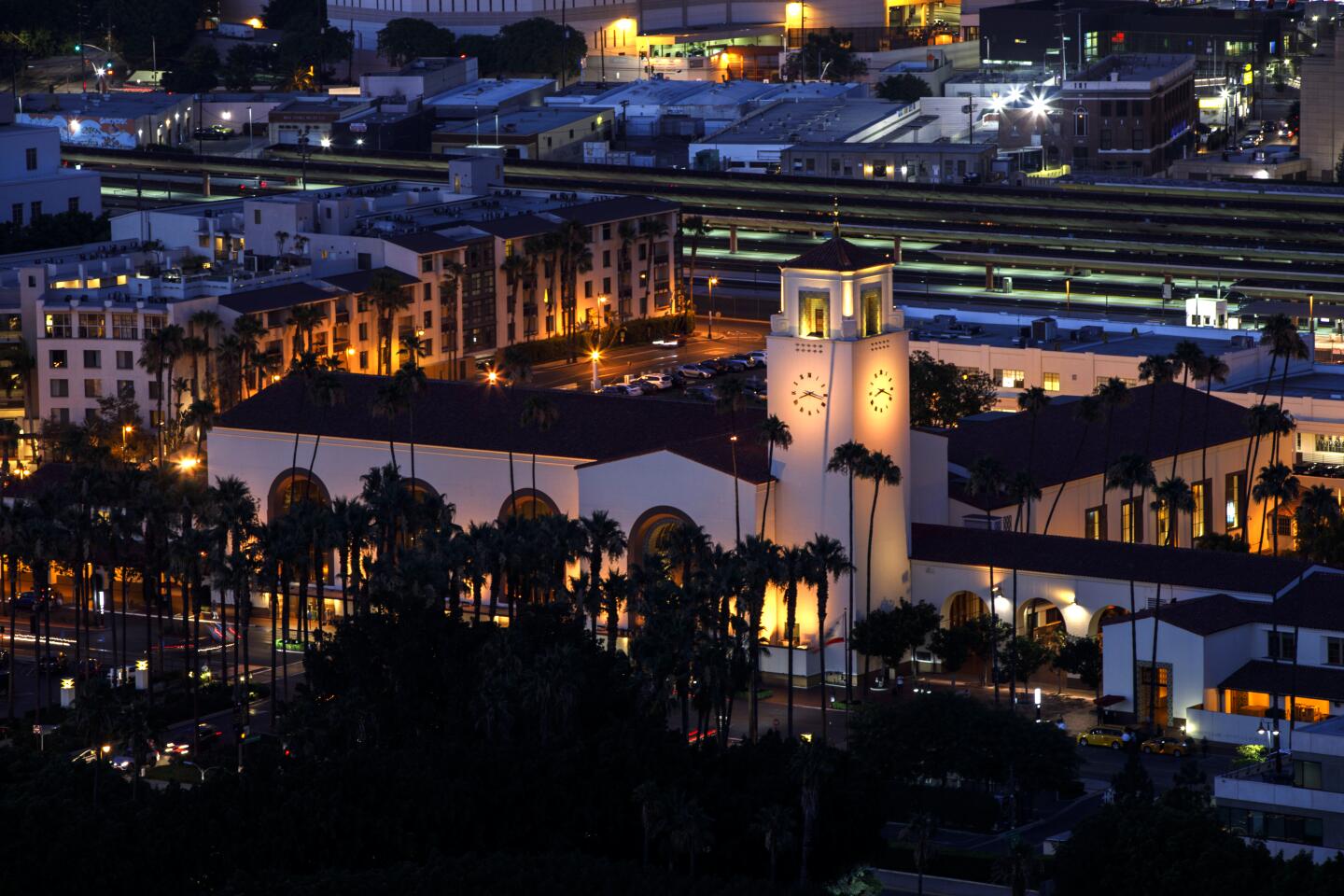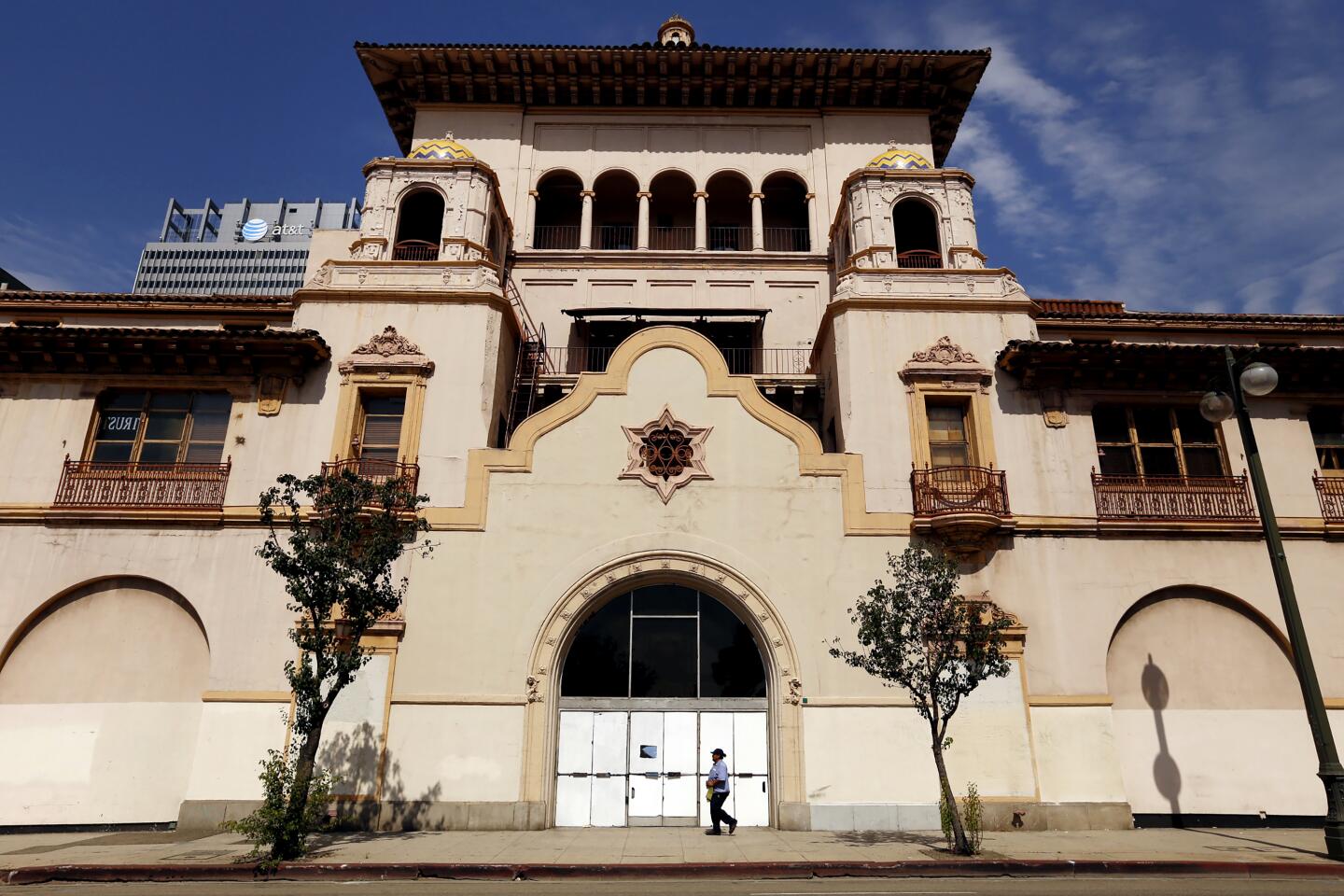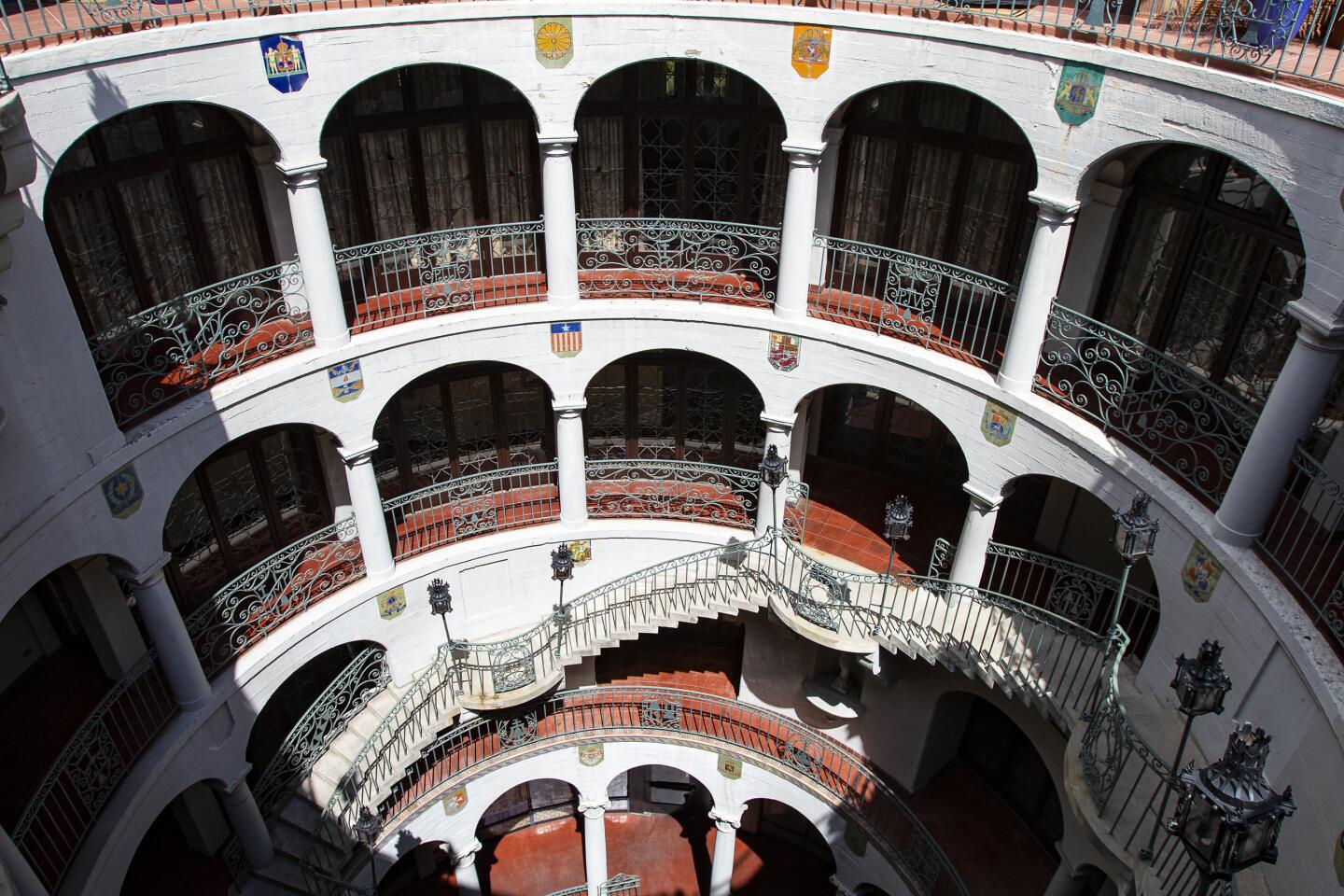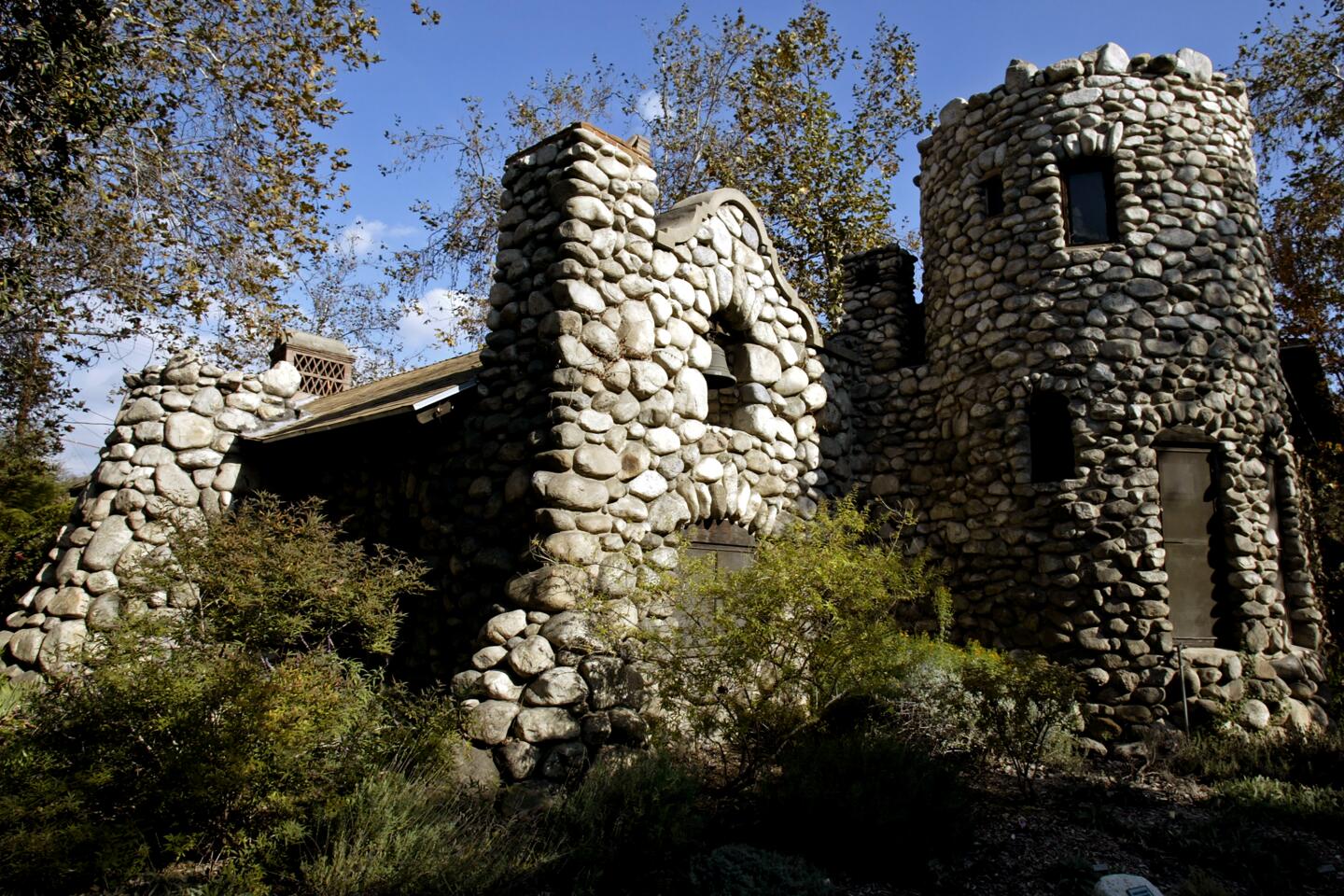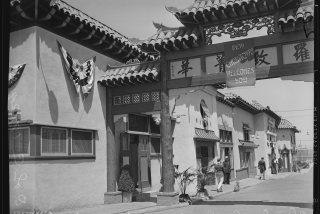Mission Revival as an architectural movement helped sell California
When California boosters wanted to flaunt the Golden State’s bounty at the world’s fair in 1893, they presented it in a monumental package — a stalwart resurrection of the then-crumbling Franciscan missions. After that, Mission Revival became both a literal and an architectural movement.
Whitewashing any sins of departed conquistadores, Californians and newcomers alike bought into the idyllic, pastoral life the Mission Revival suggested. They started building homes that matched the idyll, and that same pride of place spurred efforts to save Father Serra’s originals.
The dilapidated missions “really started to become romanticized,” said Kimberly Bahnsen McCarron, a board member of the Southern California chapter of the Society of Architectural Historians. “They started to become a nice descriptor of history that was different than on the East Coast.”
Further feeding the romance, the runaway popularity of “Ramona,” an 1884 novel about a young Scottish-Native American woman, set in Southern California. The tragic love story was author Helen Hunt Jackson’s attempt to create an “Uncle Tom’s Cabin” sympathetic to Mission Indians; instead, its tens of thousands of readers conjured an idealized vision of rancho and mission life, a mythic backstory for the state itself.
This same moment saw the transcontinental railroads’ first push into California, so masses of “Ramona” fans ventured to see for themselves the locales described in the book.
“At this point, most of these missions were in ruins. This, in part, spurred the restoration,” said Peter J. Holliday, author of “American Arcadia: California and the Classical Tradition” (Oxford University Press, 2016).
Then, in 1893, the World’s Columbian Exposition opened in Chicago — 690 acres of exhibits and wild wonders from every state and around the globe. In a sea of French neoclassical structures, architect Arthur Page Brown’s California Building stood unique.
The first major expression of Mission Revival, the immense building (144 by 435 feet) held palm trees stretching to the ceiling, behemoth sequoia slabs, enough samples of citrus and stone fruit to feed 300,000, an art gallery, gold nuggets, native plants and one room filled floor to ceiling with poppies.
The Chicago Graphic extolled the exhibit’s “tropical luxuriance and vastness,” and said California outshone all other states. During the six-month fair, 40,000 people a day visited the California Building, lured by the irresistible lifestyle it evoked. One Wisconsinite wrote in the guest register, “Why can’t I go and live there permanently?”
Brown took “many liberties with the austere style of the early Franciscan missionaries,” wrote art historian Robert Jay, but in so doing heralded “a new and promising direction in West Coast architecture.”
Elsewhere in the country, “a lot of designers were trying to figure out what is the ‘American style?’” McCarron said. In California, the railroads, hotels and tourism bureaus tapped into mission mania: “Let’s put our thumb on it, and let’s say this is the style that represents us.”
Thus came Riverside’s Mission Inn, numerous Southern Pacific and Santa Fe Railway stations, the Fred Harvey Houses, the Hotel Green in Pasadena and the original Hollywood Hotel (now the site of Hollywood & Highland). As much as anything, their Mission Revival style became a brand, a form of advertising, an enchanting payoff for pilgrims arriving from the East and Midwest.
“It’s foreign, but you don’t have to leave the comfort of your own country. It’s exotic, but you can get there on the new railroad,” Holliday said.
Journalist and Southwest Museum founder Charles Lummis was one of the chief preservationists of the original missions. And his Highland Park home, El Alisal, features a Mission Revival-style gable and bell tower; it’s on the National Register of Historic Places.
He was among a generation that fancied themselves new Californios, heirs to the mythologized rancho lifestyle. The mission-style homes they built, Holliday said, were “a way of them expressing these new identities they were fashioning for themselves.”
Many features of the original missions still made sense for these residential successors. Thick white walls, tile roofs and wide eaves keep them cool, yet large windows welcome the warming sun when it’s low in the winter sky. Arcades and patios encourage enjoyment of the mild climate. With their simplicity, Holliday said, they had “that sense of being built in the frontier.”
Stucco — rarely seen in colder climes — can mimic two-foot-thick adobe, when troweled onto wood frames. Before this most home siding was wood or brick.
Mission Revival was widely used for public buildings such as schools and post offices during its heyday from 1893 through World War I. Substantial and fortress-like, McCarron said, they exuded the sense that “something important is happening here.”
It adorned bungalow courts, such as West Hollywood’s aptly named Ramona Apartments.
Although popular for single-family residences, Mission Revival never became a fad, with entire neighborhoods springing up in the style. This was unlike the genres that overtook it in the teens and ‘20s, Craftsman and Spanish Colonial Revival — the latter, embellishing Mission’s stucco and tile boxes with baroque Old World details and elaborate carvings.
Even though its clean lines made it endlessly adaptable, the late architectural historian David Gebhard wrote that Mission Revival ended up being “too naive and too puritanical. ...The simple life was giving way to the affluent life of the 1920s.”
The style never disappeared, but instead of its basic form, it was used as a starting point, or a familiar component. Holliday said Irving Gill, innovative architect of the early 1900s, “could take the simplicity of the mission, and he forged early modernism out of it.”
Even as late as 1939, Union Station melded Art Deco and Streamline Moderne with Mission Revival, the contemporary with the signature style of the new West. As Holliday said, its message to train passengers disembarking in Los Angeles: “You’re finally here.”
Mission Revival
Features: Smooth stucco walls, low-pitched red-tile roofs, wide, open, overhanging eaves with exposed wood rafters, bell-gables or espadañas — wall extensions above the roof that form curved or scalloped parapets, arched windows or doorways, patios or verandas, covered walkways, round and quatrefoil windows, sometimes even a “bell tower.” But not elaborate wrought-iron work, or baroque carvings and other details found after 1915 in the Spanish Colonial Revival.
Places to find them: scattered throughout Southern California, including Los Angeles neighborhoods such as Hollywood, Highland Park-Garvanza, Pico-Union, West Adams Terrace and Angelino Heights, Santa Barbara, San Diego, Anaheim, Fullerton, Redlands and Riverside, including its Ramona neighborhood.
Prominent architects: Arthur B. Benton, Arthur Page Brown, Myron Hunt and Elmer Gray, Sumner P. Hunt, Lester S. Moore, Julia Morgan, Willis Polk, Frederick Louis Roehrig
More to Read
Sign up for Essential California
The most important California stories and recommendations in your inbox every morning.
You may occasionally receive promotional content from the Los Angeles Times.
